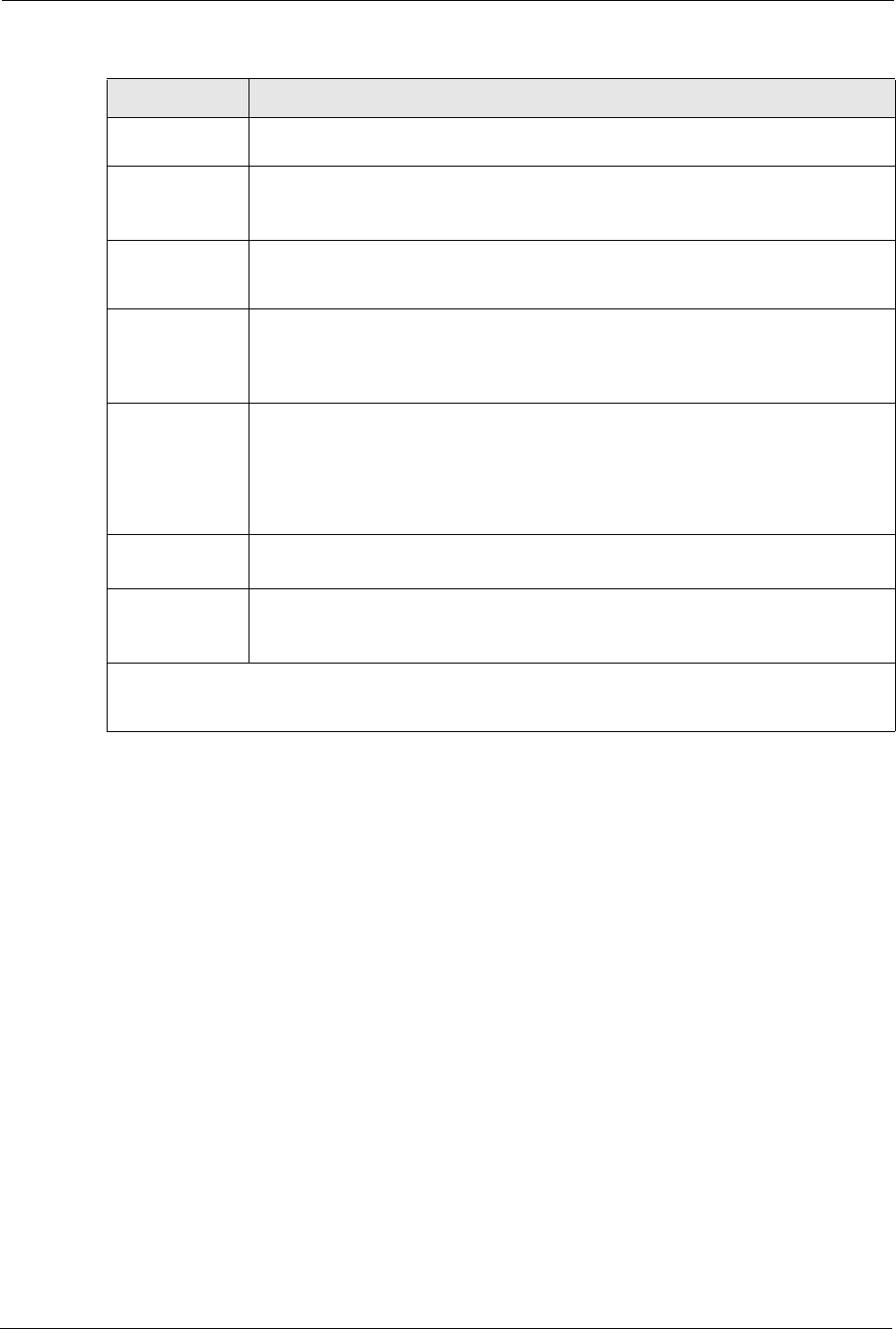P-2302R Series VoIP Station Gateway User's Guide
Table Of Contents
- P-2302R Series
- User’s Guide
- Copyright
- Federal Communications Commission (FCC) Interference Statement
- Safety Warnings
- ZyXEL Limited Warranty
- Customer Support
- Table of Contents
- List of Figures
- List of Tables
- Preface
- Introducing the Prestige
- Introducing the Web Configurator
- Wizard Setup
- System Screens
- LAN Setup
- WAN Screens
- Introduction to VoIP
- VoIP Screens
- Phone
- Phone Book
- Phone Usage
- Network Address Translation (NAT) Screens
- Static Route
- Firewall
- Content Filtering
- Remote Management Screens
- Universal Plug-and-Play (UPnP)
- Logs
- Bandwidth Management
- 19.1 Bandwidth Management Overview
- 19.2 Bandwidth Classes and Filters
- 19.3 Proportional Bandwidth Allocation
- 19.4 Application-based Bandwidth Management
- 19.5 Subnet-based Bandwidth Management
- 19.6 Application and Subnet-based Bandwidth Management
- 19.7 Scheduler
- 19.8 Maximize Bandwidth Usage
- 19.9 Bandwidth Borrowing
- 19.10 Configuring Summary
- 19.11 Configuring Class Setup
- 19.12 Configuring Monitor
- Maintenance
- Introducing the SMT
- General Setup
- WAN Setup
- LAN Setup
- Internet Access
- Remote Node Configuration
- Static Route Setup
- Network Address Translation (NAT)
- Enabling the Firewall
- Filter Configuration
- SNMP Configuration
- System Information and Diagnosis
- Firmware and Configuration File Maintenance
- 33.1 Filename Conventions
- 33.2 Backup Configuration
- 33.2.1 Backup Configuration
- 33.2.2 Using the FTP Command from the Command Line
- 33.2.3 Example of FTP Commands from the Command Line
- 33.2.4 GUI-based FTP Clients
- 33.2.5 TFTP and FTP over WAN Management Limitations
- 33.2.6 Backup Configuration Using TFTP
- 33.2.7 TFTP Command Example
- 33.2.8 GUI-based TFTP Clients
- 33.3 Restore Configuration
- 33.4 Uploading Firmware and Configuration Files
- System Maintenance
- Remote Management
- Call Scheduling
- Troubleshooting
- 37.1 Problems Starting Up the Prestige
- 37.2 Problems with the LAN Interface
- 37.3 Problems with the WAN Interface
- 37.4 Problems with Internet Access
- 37.5 Problems with the Password
- 37.6 Problems with the Web Configurator
- 37.7 Problems with a Telephone or the Telephone Port
- 37.8 Problems with Voice Service
- 37.9 Pop-up Windows, JavaScripts and Java Permissions
- Product Specifications
- Wall-mounting Instructions
- Setting up Your Computer’s IP Address
- IP Subnetting
- PPPoE
- Triangle Route
- SIP Passthrough
- Index

P-2302R Series User’s Guide
283 Chapter 30 Filter Configuration
The following figure illustrates the logic flow of an IP filter.
Port # Enter the source port of the packets that you wish to filter. The range of this field is 0
to 65535. This field is ignored if it is 0.
Port # Comp Press [SPACE BAR] and then [ENTER] to select the comparison to apply to the
source port in the packet against the value given in Source: Port #.
Options are None, Equal, Not Equal, Less and Greater.
TCP Estab This field is applicable only when the IP Protocol field is 6, TCP. Press [SPACE
BAR] and then [ENTER] to select Yes, to have the rule match packets that want to
establish a TCP connection (SYN=1 and ACK=0); if No, it is ignored.
More Press [SPACE BAR] and then [ENTER] to select Yes or No. If Yes, a matching
packet is passed to the next filter rule before an action is taken; if No, the packet is
disposed of according to the action fields.
If More is Yes, then Action Matched and Action Not Matched will be N/A.
Log Press [SPACE BAR] and then [ENTER] to select a logging option from the following:
None – No packets will be logged.
Action Matched - Only packets that match the rule parameters will be logged.
Action Not Matched - Only packets that do not match the rule parameters will be
logged.
Both – All packets will be logged.
Action Matched Press [SPACE BAR] and then [ENTER] to select the action for a matching packet.
Options are Check Next Rule, Forward and Drop.
Action Not
Matched
Press [SPACE BAR] and then [ENTER] to select the action for a packet not
matching the rule.
Options are Check Next Rule, Forward and Drop.
When you have Menu 21.1.x.x - TCP/IP Filter Rule configured, press [ENTER] at the message “Press
ENTER to Confirm” to save your configuration, or press [ESC] to cancel. This data will now be
displayed on Menu 21.1.x - Filter Rules Summary.
Table 116 Menu 21.1.x.x: TCP/IP Filter Rule
FIELD DESCRIPTION










